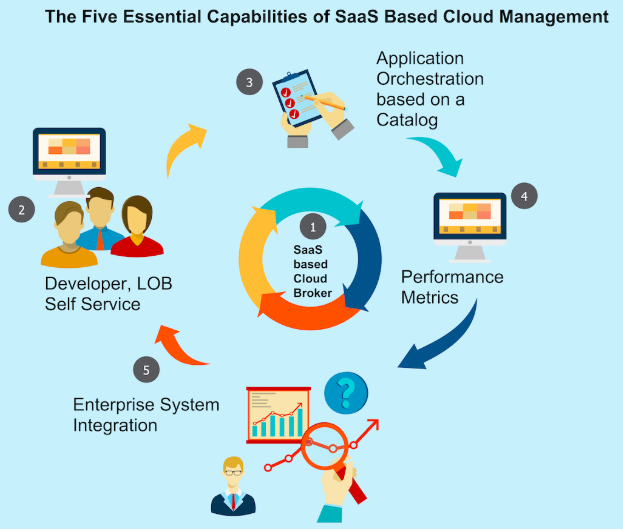 See part 1 of this series here.
See part 1 of this series here.
The Ovum Decision Matrix Research Report discusses the impact of two major shifts in cloud adoption:
- The growing impact of Shadow IT in enterprises.
- The need to migrate workloads to the cloud.
We also see a clear third shift: the need to develop Cloud Native applications for new business areas: applications that were born in the cloud, and use all-cloud resources.
These trends have created the need for greater environment visibility and control across hybrid infrastructure. As the Ovum report points out, the duality of this situation is that cloud-native workloads need to be managed in a similar manner as VMs on private clouds.
This key requirement has created the need for greater visibility and control over all the environments that are in use – either private or public, either infrastructure running VMs, containers, serverless, and also legacy, bare-metal applications.
The market in multicloud and hybrid cloud management is still evolving, and many of the vendors come from the virtualization management space. While this seems a sensible evolution, the challenge is that the new cloud-native workloads (those already in the cloud) do not look like or operate in the same way as VMs. The difference between these two paradigms needs to be abstracted away from both developers and infrastructure teams. Established vendors are struggling to balance this new world with VM centric infrastructure.
So what are the key lessons we’ve learned over the years, working with customers on enabling them to effectively manage their complex, hybrid environments?
The Five Key Cloud Management Platform (CMP) Capabilities

At a minimum, the five key capabilities that a Hybrid CMP solutions need to enable include:
- True Hybrid Cloud Brokerage Delivered as a SaaS: The ability to connect to and abstract connectivity to any of the underlying platforms – VMs, Containers, private and public clouds using a common API. Both developers write to and infrastructure teams orchestrate applications across an Open API. Hence even if the underlying clouds change, the applications do not need to change. And neither do the backend processes that support key functions such as provisioning, config management, and performance analysis. The key difference between traditional CMP platforms and the net evolution in this space, is that the next generation CMP will deliver this as a managed service.
- Seamless Developer Self-Service via SaaS: This implies the ability to provide both a self-service portal & API that enable developers to provision infrastructure for their applications using the Cloud Broker. Again, the management of this integration should be automatically delivered as a service to IT Ops, and not require any additional management overhead or custom development on their end in order to support this, at scale.
- Application Catalog: The ability to provision VMs has been around for years. Next generation CMPs need to provide the ability for users to provision complete application stacks from an application catalog or from image templates. The ability to specify and automate the placement and provisioning of new instances based on business and security policies is a key capability that must be provided.
- Performance Metrics: The ability to provide visibility and detailed metrics on global cloud regions – across servers, network, and storage, as well as granular metrics on usage and performance across individual VMs & Containers. A key use of these metrics should be around improving datacenter efficiency and utilization (which, obviously translates to costs), on both on-prem and public cloud resources.
- Enterprise Integration: Supporting seamless & open API-based integration points with existing ITSM (IT Service Management) tools, systems management platforms, service catalogs and configuration management software.
We are thrilled with Ovum ranking us 10/10 for execution. In the next and final post in this series, we will discuss Platform9’s CMP technology along with some key design principles we have adopted and constantly enhance as we work with an increasing number of customers across the globe.



